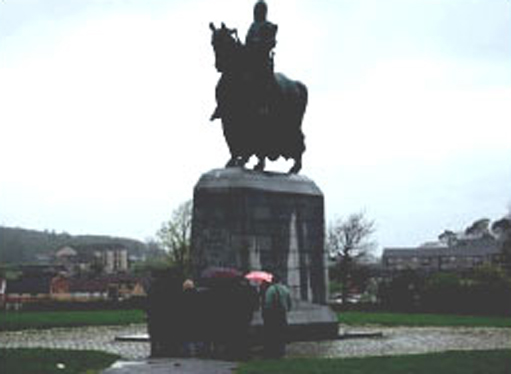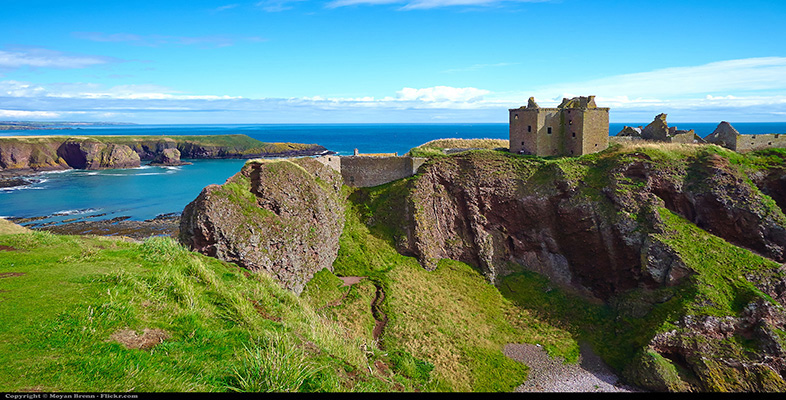2.3 Bannockburn and Culloden
In Scotland, two battlefields, Culloden (1746) and Bannockburn (1314), stand out as iconic spaces, recognised not only by Scots but also by visitors. These two battles are not the most important battles in Scotland's past; however, over time both have gained a particular place in the ‘ remembered’ past of Scotland, and both figure highly in the myth and memory making of Scots at home and abroad.
The historical significance of the Battle of Bothwell Bridge (1679) – the site of a critical defeat for the nonconformist Covenanters at the hands of the English – equals that of either Bannockburn or Culloden, yet Bothwell Bridge does not figure as strongly on the landscape of memory, and it is heavily encroached by suburban development (Sunday Herald, 26 November 2006). Furthermore, although both Bannockburn and Culloden are under the aegis of the National Trust for Scotland, each is remembered in quite a different manner. Both Bannockburn and Culloden have come to represent much more than individual events. Over time, both have contributed to a sense of self among Scots and are often seen as markers of ‘ Scottishness’ for those without Scots ancestry.
NTS Places to Visit – Culloden Battlefield
NTS Places to Visit – Bannockburn Battlefield
Battle of Bothwell Bridge
I will focus on Culloden Battlefield as a heritage place and will consider how it is that it and Bannockburn figure so differently in the myth making of Scots at home and abroad and why it is that the two sites are remembered, perceived and experienced in very different ways.
Some of the explanation for this phenomenon lies in the nature and outcome of the battles themselves. There is one essential difference in the two battles from a Scottish perspective: Bannockburn has long been seen as a victory, Culloden a defeat. As such, Culloden speaks strongly to the Celtic imagination and the ‘glorification of sorrow’ (Morton, quoted in McArthur, 1994, p. 97). It also sets Culloden into a category of ‘remember the fallen’ (cf. Lloyd, 1998, p. 22) sites where lives were lost in defence of national principles. The Battle of Culloden took place on Culloden Moor, near Inverness, Scotland, in April 1746. For many years styled as a defeat at the hand of the English, Culloden was the culmination of the Jacobite uprising during which Prince Charles Edward Stuart (Bonnie Prince Charlie) attempted to gain the throne of Scotland, thus restoring the Stuarts to their rightful role as ‘god-kings’ of Scotland (McLean et al., 2007). According to the Culloden website (linked above), the battle, which was fought in just 40 minutes, set in motion a series of events that saw the repression of a ‘distinctive way of life and culture’ and the removal of Highlanders from their homes during the Highland Clearances, in turn leading to mass emigration to Canada, the United States and other parts of the world.

By contrast, the Battle of Bannockburn, which took place in June 1314 near the modern-day city of Stirling, was a Scottish victory. English troops under Edward II were routed by Robert Bruce, signalling a turning point in the Wars of Independence (beginning 1296) and marking the end of English rule over Scotland. Although this battle ensured Robert Bruce's role as king of Scotland, this tended to be recognised only within Scotland, and despite the decisiveness of Bannockburn, battles continued to be waged for many years to come. It was in the aftermath of Bannockburn that the Declaration of Arbroath (1320), widely recognised as the ‘most important document in Scottish history’ (Magnusson, 2001, p. 187), was signed.
